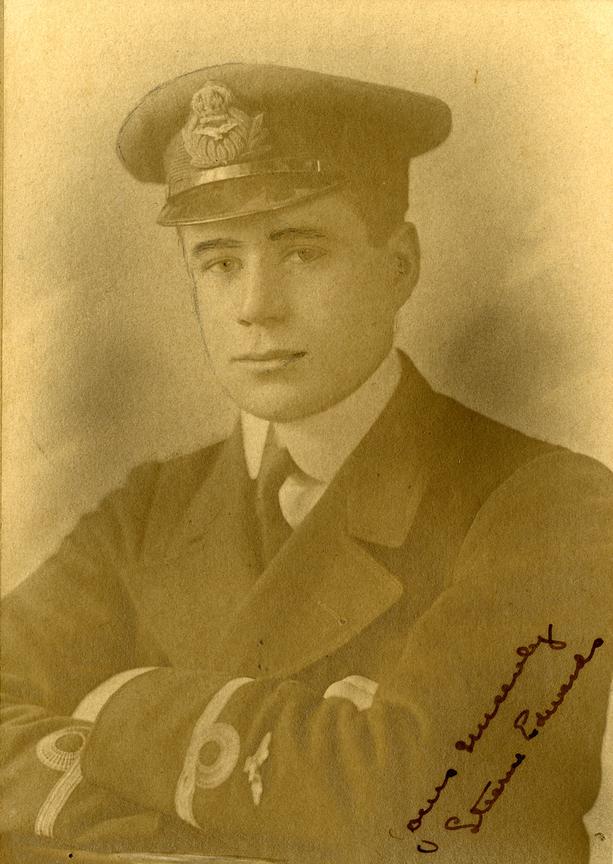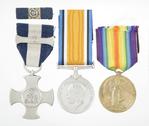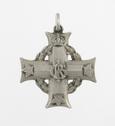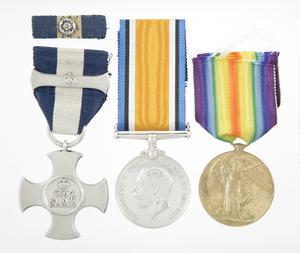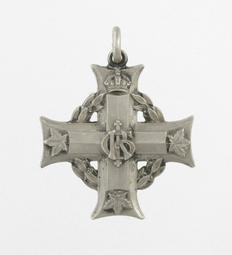Unit
209 Squadron
Branch
Service Component
Royal Air Force
Service Number
birth
1893/02/13
Franktown, Ontario, Canada
death
1918/11/22
York, United Kingdom, England
grave
Tadcaster Cemetery, England
Gender
Male
Stearne Tighe Edwards was born in Franktown, Ontario, on 13 February 1893. He was the second of Dennis and Annie Edwards’ three children.
Wanting to serve as a pilot, Edwards attended the privately run Wright School in Dayton, Ohio, for flight training. He received his certification on 13 October 1915.
On 31 October 1915, Edwards was appointed a probationary flight sub-lieutenant in the Royal Naval Air Service (RNAS) in Ottawa. He was shipped to England not long after. Edwards served in various RNAS wings and squadrons in France and the Mediterranean between April 1916 and May 1918. During that time, he shot down 17 enemy aircraft. On 30 October 1917, he was awarded the Distinguished Service Cross (DSC) for his feats in the air.
On 1 April 1918, the RNAS amalgamated with the Royal Flying Corps to form the Royal Air Force (RAF). Edwards served in the 209 Squadron of the RAF. Arthur Roy Brown, the Canadian pilot often credited with shooting down Manfred von Richthofen, the Red Baron, also served in that squadron. On 18 June 1918, Edwards received a bar for his DSC in recognition of his further exploits.
Edwards was injured in a flying accident on 12 November 1918 while serving at No. 38 Training Station, Rendcombe, England. He died of his injuries 10 days later.
Stearne Tighe Edwards is buried in Tadcaster Cemetery, in England.
Distinguished Service Cross
“In recognition of his services on the following occasions: On the 3rd September, 1917, with his flight he attacked a two-seater Aviatik. The enemy machine was observed to go down in a vertical nose dive, and the enemy observer was seen to collapse in the cockpit. On the 21st September, 1917, he drove a two-seater enemy machine down out of control. On the 23rd September, 1917, he attacked an Albatross scout, which crashed into the sea. On the same date he attacked three Albatross scouts. One got on the tail of another officer's machine at very close range shooting him up very badly. Flt. Cdr Edwards attacked him from above, and the enemy machine turned on its back and went down in a vertical dive. He followed the enemy machine down to 8,000 feet, when its wings came off, and it fell to the ground.”
– London Gazette, 30 October 1917, Supplement 30363
Bar to Distinguished Service Cross
“For conspicuous bravery and most brilliant leadership of fighting patrols against enemy aircraft. On the 2nd May, 1918, whilst leading a patrol of four scouts, he encountered a hostile formation of eight enemy scouts, and drove down one enemy machine completely out of control. Soon afterwards he engaged another formation of six enemy scouts, driving down one to its destruction whilst his patrol accounted for another. He only broke off the fight owing to lack of ammunition. He has destroyed or driven down out of control many enemy machines since he was awarded the Distinguished Service Cross, and has at all times shown the greatest gallantry and a fine offensive spirit.”
– London Gazette, 18 June 1918, Supplement 30756

